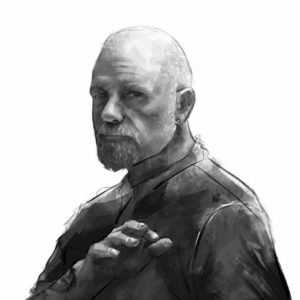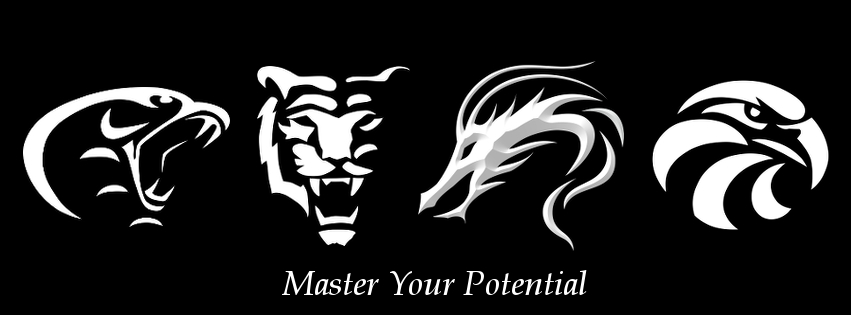During classes you will be told to relax your shoulders, keep your spine straight, have your weight on your toes, bend your knees, keep your elbows in and down, picture and defend the wedge that points out from your shoulders to a point in front of you, have your feet thus, rotate like this, step like that etc.
This is not an article repeating things that can be best demonstrated in the training studio.
The principals of a martial art form the set of parameters for it’s development; a bit like the way the environment sets the parameters for evolution of a any species. Or you could see the principals as an algorithm; a mathematical expression of instructions and clauses; if this, do this, if that, do that etc. An algorithm can give the information for describing a pattern as in fractal maths. If you follow the set of principals a martial art will develop a particular style and the structure is an aspect.
As mentioned in another article of this series, Tao Te Kung Fu is intended to work in real life situations, it is practical. It should also work for virtually everyone whether male or female, big or small, young or old. With these two points in mind, let’s look at how the structure has evolved.
Many martial arts techniques have been saved for posterity by the creation of a sport that utilises them. To ensure that particular techniques are used, others are forbidden; so to ensure grappling is used, all strikes may be ruled out. To ensure punches are used, kicks and locks may be ruled out. These are the parameters that will cause a particular style to develop. Lets use boxing as an example; (I write as an ex boxer, who loves the sport) more practical than most martial arts as striking with the hands is supremely useful in winning a fight. But it is still a sport and people aren’t supposed to die, so the rules say you can’t hit below the belt or on the back, or for that matter anyway but with the front of the fist. If you can’t hit my back, I can safely turn sideways on to you, thus minimising my target area and I will move round leading with my back. In real life there is no such rule, so we stand almost square on, enabling us to move easily in either direction. The sideway stance of boxing also encourages a leading hand jab that reaches out and rotates the fist horizontally with most of the weight on the leading leg. More than the occasional boxer has delivered a left jab in a real fight and been shocked to discover themselves with an elbow able to bend in the wrong direction or a few broken ribs, when their opponent has stepped in behind them. In boxing you can’t hit below the belt, so a high guard can be used, in real life a guard has to be more versatile. A bout has to be entertaining and non lethal, so gloves ensure that the most damaging strikes are reduced in force and the size of the front of the glove makes the most dangerous strikes difficult to deliver; this gives spectators several three minute rounds and the participants don‘t get too hurt. A bare hand can strike more precisely so can hit targets that need much less force to be effective, the blade of the hand, the finger tips, the heal of the hand all make effective weapons as do the elbow, knee etc. Expect to see such strikes within the Tao Te Kung Fu forms.
One of the obvious things you will notice about boxing is that the participants tend to be young male and stupidly fit; even then they are put into weight categories. That should tell us something about the practicality of the art. Outside of the ring, the average boxer can, if a fight generally goes his way and he gets a few blows in, deliver devastating punches that will often win him the fight. (He‘ll also, and most significantly, have the right mental attitude). If you happen to be male, young, stupidly fit and either big, (or can ensure you only get into conflict with someone of similar size) that’s great, and boxing is the art for you.
Tao Te Kung Fu has to work for everyone. There are some styles of martial arts that teach a principle of ‘one strike, one win’ or variations on these words. The idea is to perfect your technique to never need more than one strike. It’s a good plan, as far as it goes. The problem is that if this is a key principle, then other areas of technique and training will be shaped by it. Why do I need combinations, or speed of footwork, if I only need to deliver one blow? It was Douglas Adams who pointed out that the problem with equipment that can never go wrong, is that when a piece of equipment that can never go wrong, goes wrong, it will inevitably be impossible to repair. So what if my plan to win with one blow goes wrong?
If Tao Te Kung Fu is to work for everyone the basic structure must facilitate a fast continuous attack. Fights are often like conversations; combatants deliver blows almost in turn. Simply because it is quite difficult to hit while you are defending, like trying to get a word in, when someone else won‘t shut up. Your best bet then is to defend and attack at the same time and then not stop your attack until you have won. Lets assume that your opponent has a blow that, if delivered, will stop you in your tracks. In which case you need a technique that gets you out of the way of his blow while deflecting it and strike simultaneously. You need to strike with speed and you need to hit targets that will stop your opponent, not simply gain points in a game. If your opponent falls back out of reach of your hands, he could rally for his attack, so you don’t give him the chance, that is where kicks come in, enabling you to maintain the barrage until he is in range of your hands again.
To enable a fast and continuous attack, you need to be able to keep your hands moving and delivering blows in a number of ways from different angles, but all to strategic targets. This will require a stance that is high, for light fast stepping, mainly square to enable both hands to deliver equally well. With hands in front and elbows in.
If you are twenty stones of muscle, and if your opponent has no help standing by, and if the floor is clean, you may do well to grapple on the floor and use your strength. If not, stay on your feet. This approach will impact on the structure of kicks also. No one has good stability on one leg. Traditional Wing Chun uses kicks, mainly only when one holds both the opponents arms. This means that your hands are tied up and you are on one foot. You might get away with this if you only have one opponent. If you kick; keep it low. You kick that which you can’t reach with your hands, so knees and ankles are good targets and when your opponent is backing off is a good time. If someone rushes in when you are on one foot, your chances of staying up are slim to none. So when you kick, ensure that you have balance and are not over committed; you should be able to change your mind and withdraw your foot.
When you understand the reason for the development of the principles of Tao Te Kung Fu structure it will become instinctive.









